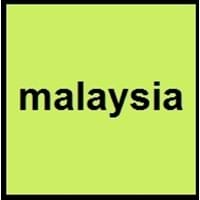Xhosa and Malaysian
- Xhosa has 15 click sounds, borrowed from the khoi-khoi and san languages of the South Africa.
- The same sequence of consonants and vowels can have different meaning when said with different tones, so Xhosa is tonal.
- One of the most politically powerful language historically is Malaysian Language.
- Malaysian earliest known inscriptions were found in South of Sumatra way back in 683-6 AD.
All Xhosa and Malaysian Dialects
Most languages have dialects where each dialect differ from other dialect with respect to grammar and vocabulary. Here you will get to know all Xhosa and Malaysian dialects. Various dialects of Xhosa and Malaysian language differ in their pronunciations and words. Dialects of Xhosa are spoken in different Xhosa Speaking Countries whereas Malaysian Dialects are spoken in different Malaysian speaking countries. Also the number of people speaking Xhosa vs Malaysian Dialects varies from few thousands to many millions. Some of the Xhosa dialects include: Gcaleka, Thembu. Malaysian dialects include: Bengkulu , Pekal. Also learn about dialects in South American Languages and North American Languages.
Xhosa and Malaysian Speaking population
Xhosa and Malaysian speaking population is one of the factors based on which Xhosa and Malaysian languages can be compared. The total count of Xhosa and Malaysian Speaking population in percentage is also given. The percentage of people speaking Xhosa language is 0.11 % whereas the percentage of people speaking Malaysian language is 1.16 %. When we compare the speaking population of any two languages we get to know which of two languages is more popular. Find more details about how many people speak Xhosa and Malaysian on Xhosa vs Malaysian where you will get native speakers, speaking population in percentage and native names.
Xhosa and Malaysian Language Codes
Xhosa and Malaysian language codes are used in those applications where using language names are tedious. Xhosa and Malaysian Language Codes include all the international language codes, glottocodes and linguasphere.





